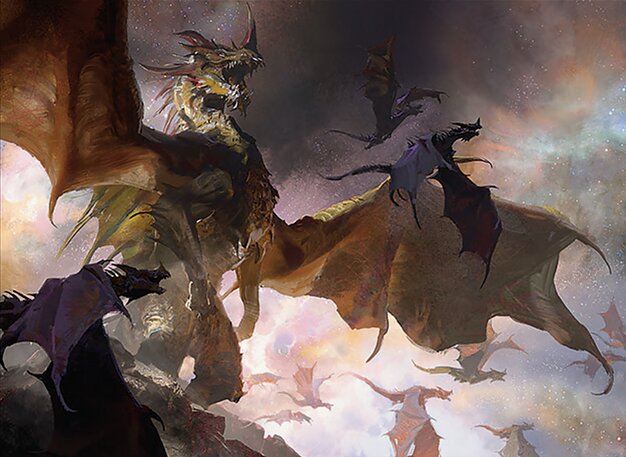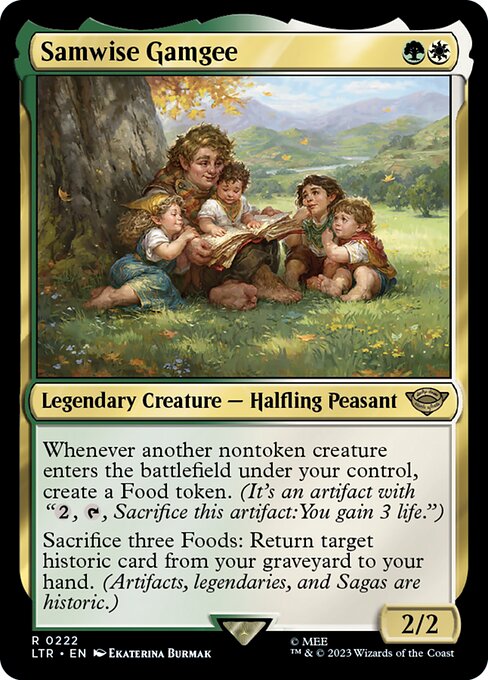Deck & Commander Strategies

The Ur-Dragon
Ramp aggressively to cast large dragons that overwhelm opponents with high damage output and value from dragon synergies.

Brenard, Ginger Sculptor
Generate and utilize food tokens to buff creatures and maintain board presence, leveraging food-related synergies and creature growth.

Wort, the Raidmother
Cast legendary spells twice from hand and graveyard by recurring them with the commander’s ability, creating continuous value and board presence.

Shu Yun, the Silent Tempest
Use prowess and multiple instant/sorcery spells to grow Shu Yun and deal large amounts of combat damage, often leveraging double strike and damage triggers that affect all opponents.
Gameplay Insights
- 1
The food deck’s early focus on food token generation and creature buffs enabled a steady buildup of board presence that could pressure opponents continuously.
- 2
Shu Yun’s combat phase with multiple non-creature spells cast triggered prowess and double strike, resulting in a high-impact attack that also damaged all opponents through Emberclock Familiar.
- 3
Wort’s ability to cast spells twice from hand and graveyard can create a powerful recursion engine for legendary spells, making it a threat to maintain sustained pressure and value.
- 4
The Ur-Dragon deck prioritized ramp to quickly cast large dragons, establishing a formidable board presence early and putting opponents on the defensive.
- 5
Managing life totals and damage distribution became critical due to the multi-opponent damage triggers from Shu Yun’s deck, altering the game’s dynamics significantly.
Notable Cards
-

Samwise Gamgee
-

Shu Yun, the Silent Tempest
-

Talisman of Conviction
-

Arcane Signet
-

Cultivate
Gameplay Summary
The game began with players establishing their board states through ramp, token generation, and creature deployment.
The Ur-Dragon deck quickly set a strong presence by focusing on ramp and big dragons, aiming to leverage massive creatures for overwhelming damage.
The Brenard, Ginger Sculptor deck took a food token-centric approach, generating food tokens continuously and buffing creatures, while also having recursion elements in play to maximize value.
Shu Yun, the Silent Tempest was played as a prowess and combat damage-focused deck, casting multiple non-creature spells to grow Shu Yun and trigger additional combat damage effects, notably with Citis Emberclock Familiar dealing damage to all opponents when the commander hits.
Wort, the Raidmother focused on spell recursion and taking advantage of legendary spells by casting them twice from hand and graveyard, providing repeated value and board presence through creatures and spells alike. Key turning points included early ramp and token generation from multiple players, with the food and dragon decks ramping aggressively and generating board presence quickly.
Shu Yun's player managed to deal a significant amount of damage in one combat phase, leveraging double strike and prowess triggers, which also caused damage to all opponents due to Emberclock Familiar.
This shifted the life totals substantially and placed pressure on the other players.
The food deck’s synergy with food tokens and creature buffs allowed it to maintain a growing board presence, while Wort's recursion and multiple casting of spells promised to provide sustained value and potential late-game dominance.
The game featured dynamic interactions between aggressive combat strategies and resource generation, with players carefully managing threats and opportunities to build towards their respective win conditions.





























![Commander VS S12E7: ??? vs ??? vs ??? vs ??? [EDH] thumbnail](https://i.ytimg.com/vi/RtpgM-nfHno/sddefault.jpg)


![Commander Versus Series: Deck Tech - Alesha v.Yasova v. Tasigur v. Shu Yun [MTG Multiplayer] thumbnail](https://i.ytimg.com/vi/kaP2tpQL_pM/sddefault.jpg)
![Commander Versus Series: Alesha v.Yasova v. Tasigur v. Shu Yun [MTG Multiplayer] thumbnail](https://i.ytimg.com/vi/H-r66JJFVLQ/sddefault.jpg)





![Commander Randomizer Part 2 [Commander VS 316] | Magic: the Gathering Commander Gameplay thumbnail](https://i.ytimg.com/vi/okRK1jVYfno/sddefault.jpg)





![Commander VS S17E7: ??? VS ??? VS ??? VS ??? [EDH Gameplay] thumbnail](https://i.ytimg.com/vi/Wl5x-udunSg/sddefault.jpg)





